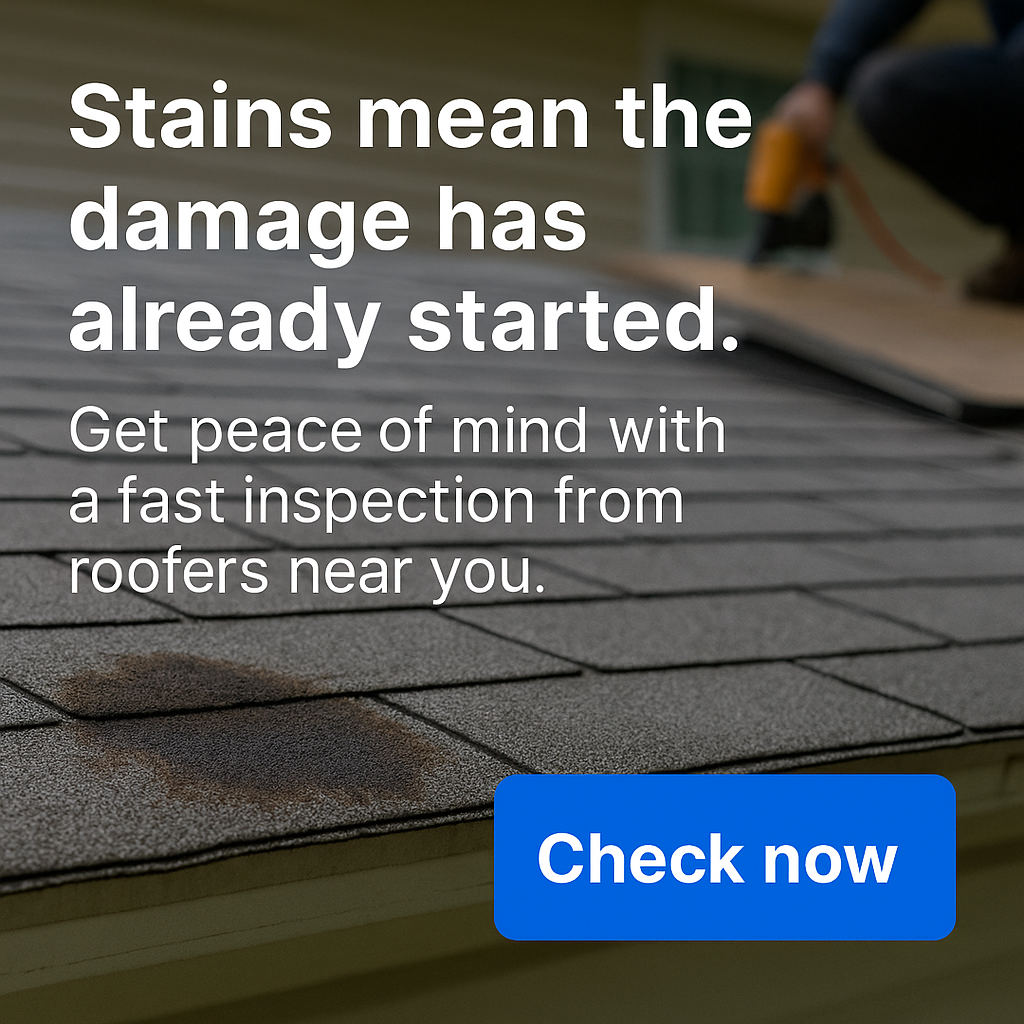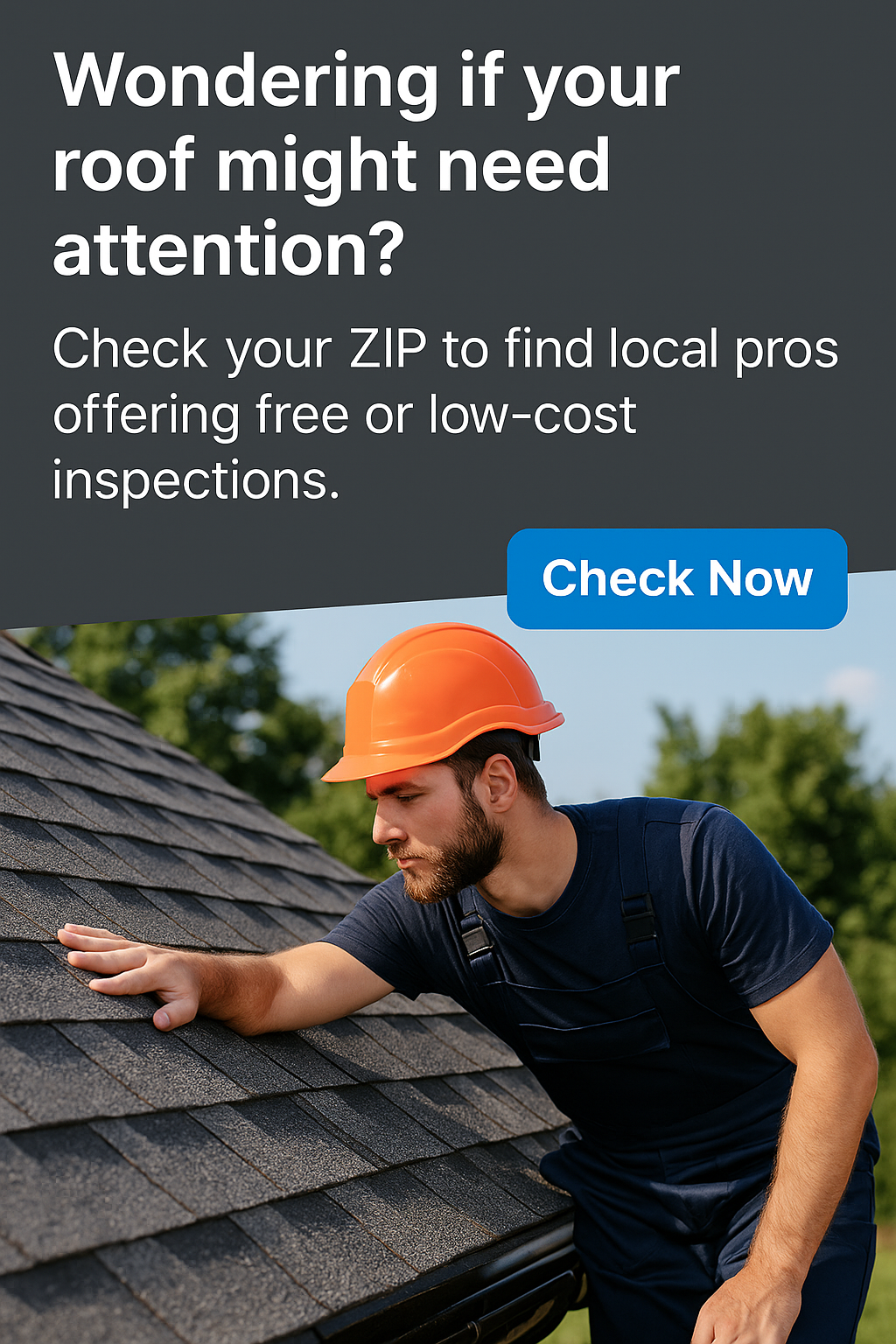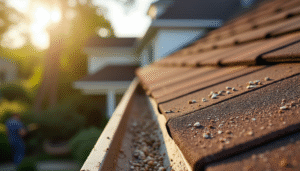In this quick guide, we’ll show you how to spot hidden roof issues before they turn into major problems.
Most homeowners don’t realize there’s a problem until it’s too late. Hidden issues can lead to leaks, mold, and costly repairs.
That’s why local roofing pros are offering free or low-cost inspections — just enter your ZIP to see what’s available in your area.
In this quick guide, we’ll show you how to spot hidden roof issues before they turn into major problems.
Importance of Timely Roof Repair
Timely roof repair is crucial for maintaining the structural integrity of your home. Minor issues can quickly escalate into major problems if left unattended. For instance, a small leak can lead to water damage, mold growth, and even compromise the stability of your home’s framework.
Moreover, addressing roof repairs promptly can save you considerable money in the long run. The cost of repairing minor damage is significantly less than replacing an entire roof. Regular inspections and maintenance help you catch problems early, minimizing the risk of severe damage and extending the life of your roof.
Additionally, a well-maintained roof contributes to energy efficiency. Gaps or damages can lead to heat loss during winter and increased cooling costs in summer. Ensuring your roof is in good condition can help reduce your energy bills and keep your home comfortable year-round.
Hidden Sign #1: Granules in the Gutter
One of the less obvious signs that your roof may need repair is the presence of granules in your gutters. These granules, typically found on asphalt shingles, provide essential protection against UV rays and enhance the durability of your roof. Over time, as shingles age or become damaged, they begin to shed these granules.
Finding granules in your gutter is usually a sign that your shingles are deteriorating. If left unchecked, this deterioration can lead to leaks and further roof damage. Regularly cleaning your gutters and checking for granules can help you detect this issue early.
If you notice an unusual amount of granules, it’s a good idea to have a professional roofer inspect your roof. They can assess the extent of the damage and recommend whether a repair or replacement is necessary.
Hidden Sign #2: Sagging Roof Deck
A sagging roof deck is a serious issue that often goes unnoticed until significant damage has occurred. This sign indicates that the underlying structure of your roof may be compromised, usually due to prolonged exposure to moisture or inadequate support.
You might notice sagging by observing your roof from a distance. If the roofline appears uneven or droopy, it’s time to investigate further. Inside your attic, look for signs of sagging in the roof deck or any structural beams.
Addressing a sagging roof deck promptly is crucial to prevent further structural damage and potential hazards. Depending on the severity, repairs might involve reinforcing the structure or replacing affected sections. Consulting with a professional can help determine the best course of action.
Hidden Sign #3: Water Stains on Interior Ceilings and Walls
Water stains on ceilings and walls are often misattributed to plumbing issues, but they can also be a sign of roof leaks. These stains may appear as dark spots or discolored patches and are typically a sign that water is penetrating your roof’s protective layers.
Ignoring water stains can lead to mold growth, structural deterioration, and worsening leaks. It’s essential to identify the source of the water intrusion to prevent further damage. This might involve checking for damaged shingles, flashing issues, or compromised sealants.
Once you’ve identified the problem, timely roof repair can prevent further damage. A professional roofer can help locate the exact source of the leak and make the necessary repairs to protect your home.

Difference Between Roof Repair and Roof Replacement
Understanding the difference between roof repair and roof replacement is essential when deciding how to address roof issues. Roof repair involves fixing specific problems, such as replacing damaged shingles, sealing leaks, or mending flashing. It’s a suitable option when the damage is localized and the overall condition of the roof is still good.
In contrast, roof replacement involves removing the existing roof and installing a new one. This option is typically recommended when the roof is extensively damaged or has reached the end of its lifespan. Although more costly than repairs, replacement ensures long-term protection and can significantly enhance home value.
Deciding between repair and replacement depends on several factors, including the extent of the damage, the age of the roof, and budget considerations. Consulting with a professional roofer can provide you with a clear understanding of the best option for your situation.
How to Perform a Basic Roof Inspection
Performing a basic roof inspection can help you identify potential problems early. Start by visually inspecting your roof from the ground. Look for missing, curled, or damaged shingles, and check for any visible sagging or unevenness.
Next, use binoculars to get a closer view of the roof surface. Pay attention to areas around chimneys, vents, and skylights, as these are common spots for leaks. Inside your home, inspect the attic for signs of water damage, mold, or structural issues.
While a basic inspection can help identify visible problems, it’s important to remember that some issues require a professional eye. Schedule regular inspections with a qualified roofer to ensure your roof remains in optimal condition.
When to Call a Professional Roofer
Knowing when to call a professional roofer can make a significant difference in maintaining your roof’s health. If you notice any of the hidden signs discussed earlier, it’s a good idea to have a professional assess the situation. They can provide an accurate diagnosis and recommend the best course of action.
Additionally, if your roof is over 20 years old, scheduling regular professional inspections is crucial. Older roofs are more susceptible to wear and tear, and a professional can help you determine when a repair or replacement is necessary.
Finally, if you’re considering selling your home, a professional roof inspection can identify any issues that might affect your home’s value or the sales process. Addressing these concerns beforehand can lead to a smoother transaction and potentially higher offers.
Cost Considerations for Roof Repair and Replacement
Understanding the costs associated with roof repair and replacement can help you plan and budget effectively. Roof repair costs vary depending on the extent of the damage, the materials required, and labor fees. On average, minor repairs can range from $150 to $1,500.
Roof replacement, while more expensive, provides a long-term solution for extensive damage or aging roofs. The cost depends on factors such as roof size, material choice, and labor. On average, a full roof replacement can cost between $5,000 and $15,000.
While these costs might seem daunting, investing in your roof is investing in your home’s safety and value. Many roofing companies offer financing options or free estimates, making it easier to manage the expenses.
Tips to Maintain Your Roof and Prevent Damage
Regular maintenance is key to preventing roof damage and prolonging its lifespan. Here are some tips to help you keep your roof in excellent condition:
- Clean Your Gutters: Regularly remove debris from gutters to prevent water buildup and damage to your roof structure.
- Trim Overhanging Branches: Trees near your roof can cause damage through falling branches or increased debris accumulation.
- Inspect Your Roof After Storms: Check for any damage or missing shingles after severe weather to address issues promptly.
- Seal and Insulate: Proper sealing and insulation can prevent heat loss and reduce the risk of ice dams in winter.
- Schedule Regular Professional Inspections: Professional inspections can catch issues early, saving you from costly repairs or replacements.
Following these tips can help you maintain your roof’s integrity and avoid unexpected expenses.
Conclusion: Keep Your Roof in Top Condition
Maintaining your roof is essential for protecting your home and ensuring its longevity. By understanding the hidden signs of roof damage, performing regular inspections, and knowing when to call a professional, you can keep your roof in optimal condition.
Timely repairs and proactive maintenance not only save you money but also enhance your home’s value and comfort. Don’t wait for visible damage to take action; be proactive in caring for your roof.
Feeling unsure about your roof’s condition? Get a quick estimate from local roofing pros near you — many offer free or low-cost inspections.

